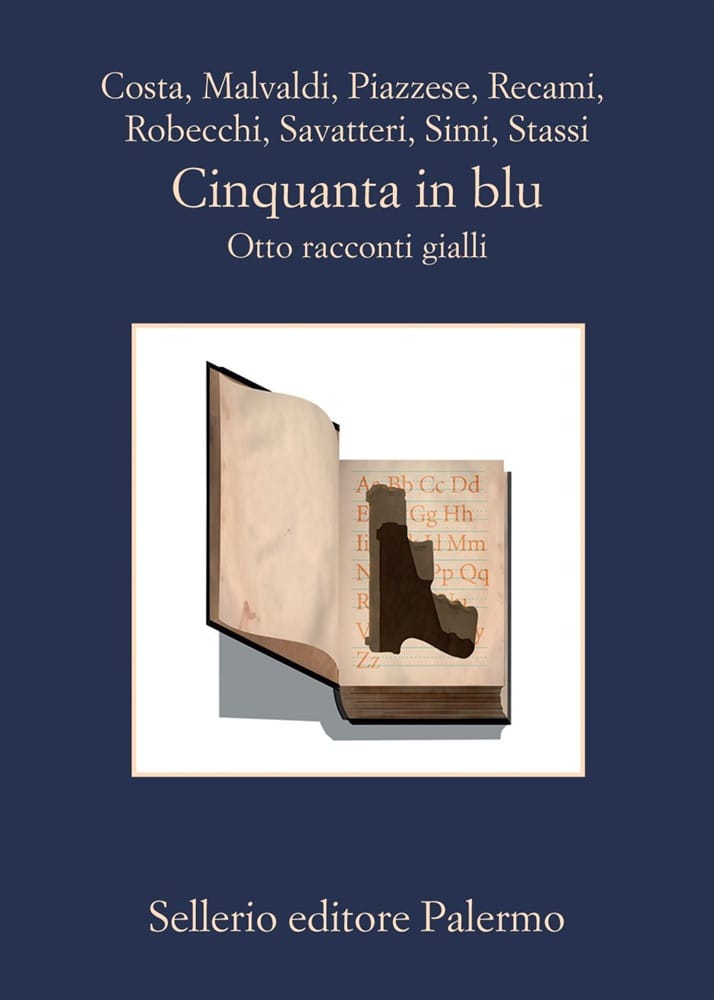Cinquanta in blu. Otto racconti in giallo

For the publishing house’s 50th anniversary, several Sellerio authors pulled a book from the catalog off the shelf and retold it in a compelling new storyline. The result was eight extraordinary adventures.
For the fiftieth anniversary of the founding of the Sellerio publishing house, eight “mystery writers,” companions at different times in our history, recalled a book chosen from the more than three thousand in the catalog, the one that struck each of them for whatever personal reason (not necessarily that they liked it the most), and made it the defining element of a new plot. They wrote a story with a book: where it is from time to time either a kind of motive for a death (so in Marco Malvaldi’s story The End is Known by the mysterious author Holiday Hall); or it is the instrument for a metamorphosis in a person’s life (in Santo Piazzese’s story, Ignazio Buttitta’s poem The True Story of Salvatore Giuliano); or it is taken as the schematic model of an exchange of misunderstandings, the narrative skeleton of a risky affair (this is the case, in Francesco Recami’s short story, of Louise de Vilmorin’s little volume The Jewels of Madame de***); or the moral nourishment that gives the force of doubt necessary to those who investigate (as it is, for Gaetano Savatteri’s two “investigators Laurel and Hardy,” the skeptical apologue of Anatole France’s Prosecutor of Judea); a pure inspiration (that’s what leads Giampaolo Simi to choose Vázquez Montalbán’s Assassination at the Central Committee as a guide to his story of terrorism); the lingering atmosphere of a black underground Palermo (which is what Gian Mauro Costa wants in common with his black intrigue in a grim and romantic affair from Stories and Chronicles of the Underground City by the unforgettable poetic chronicler and theatricalist Salvo Licata); a medicine for a horrendous case of isolation (so is Gesualdo Bufalino’s La luce e il lutto for Fabio Stassi’s bibliotherapist Vince Corso); and finally, an anguish-inducing book that becomes the idea for solving the case (as happens to Carlo Monterossi, Alessandro Robecchi’s amateur who finds himself investigating threatening postcards while reading about those of Hans Fallada’s two little anti-Nazi heroes in Everyone Dies Alone).
The authors of these stories, in pulling a Sellerio book from the shelf to commemorate the publishing house’s 50th year, did not intend to devise a “story about a book,” but attempted to recreate through fiction their nevertheless most vivid reading experience with Sellerio.